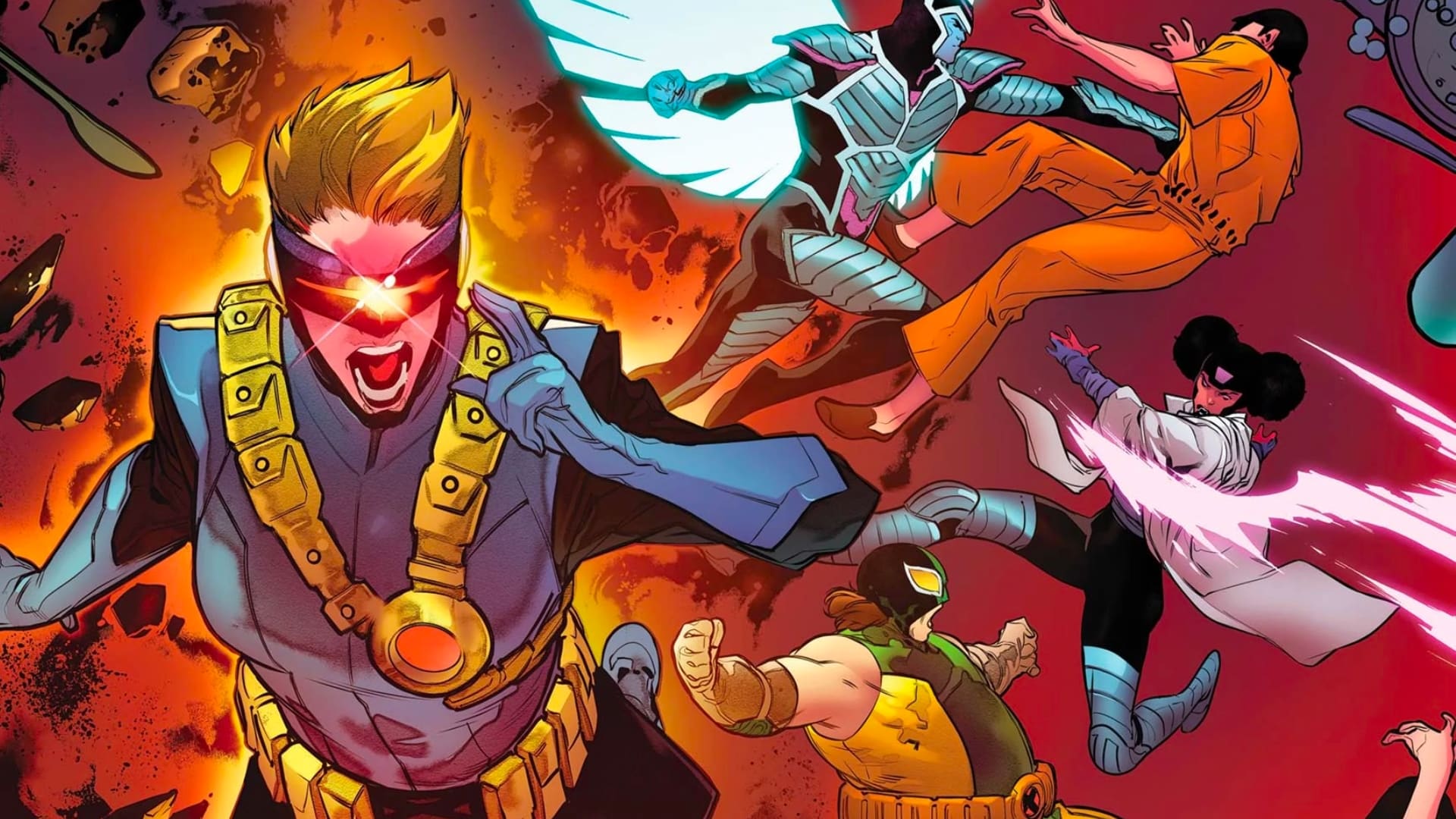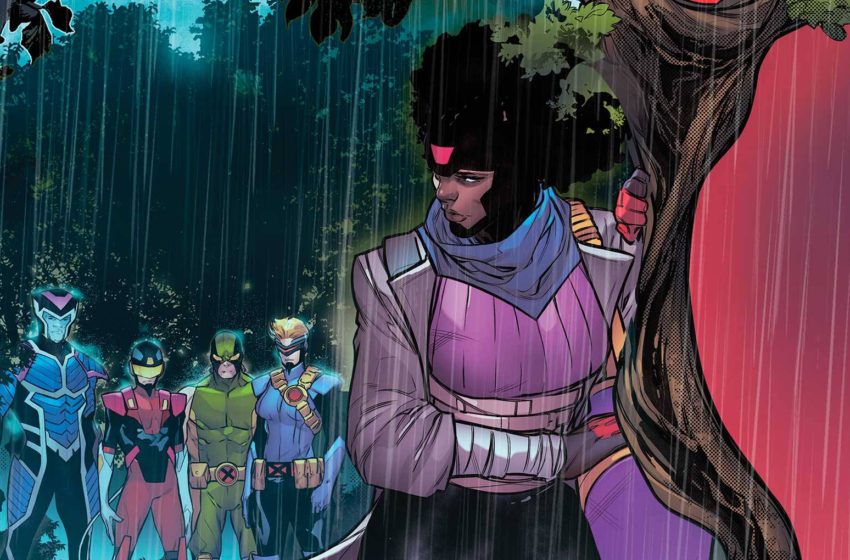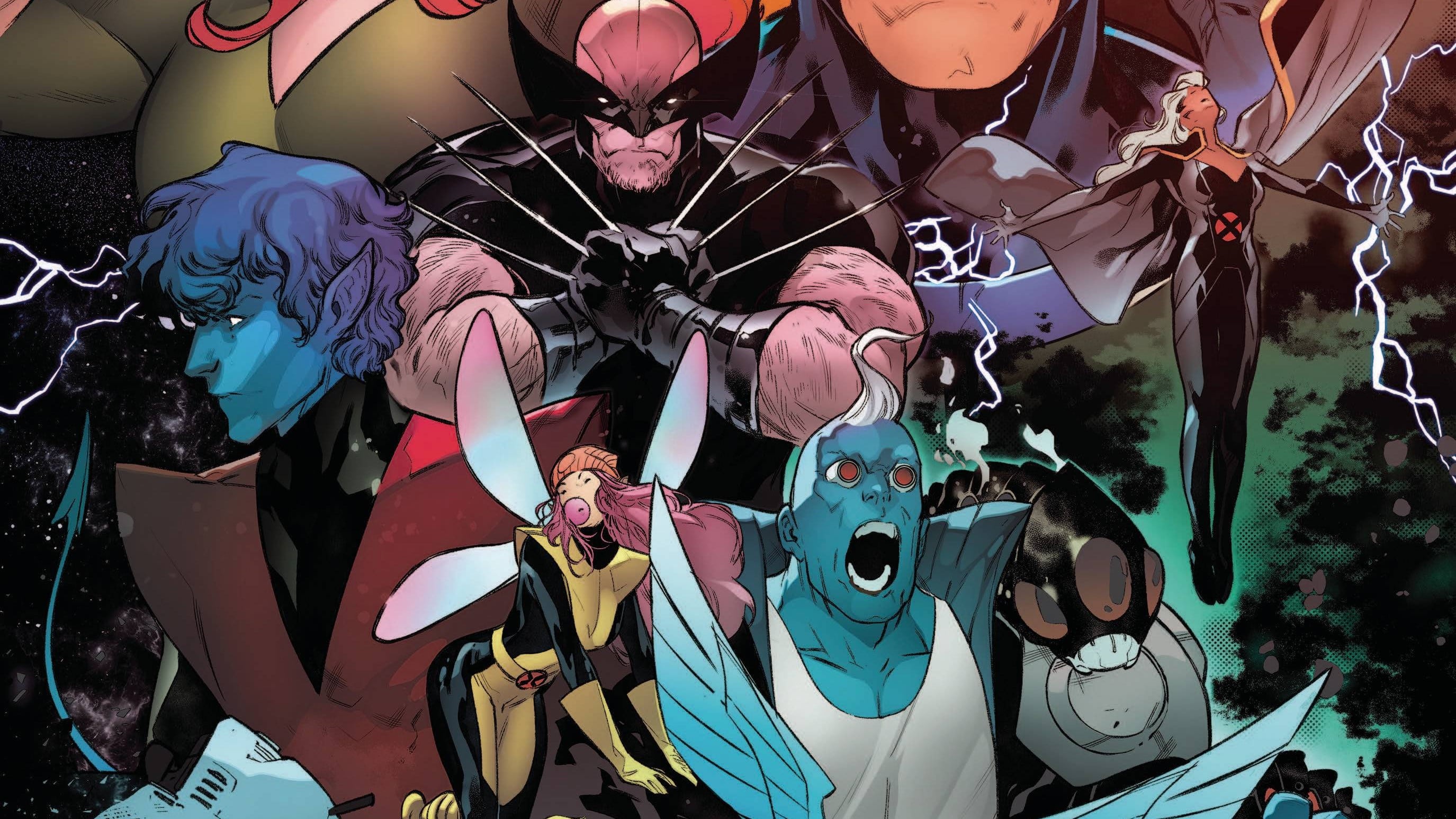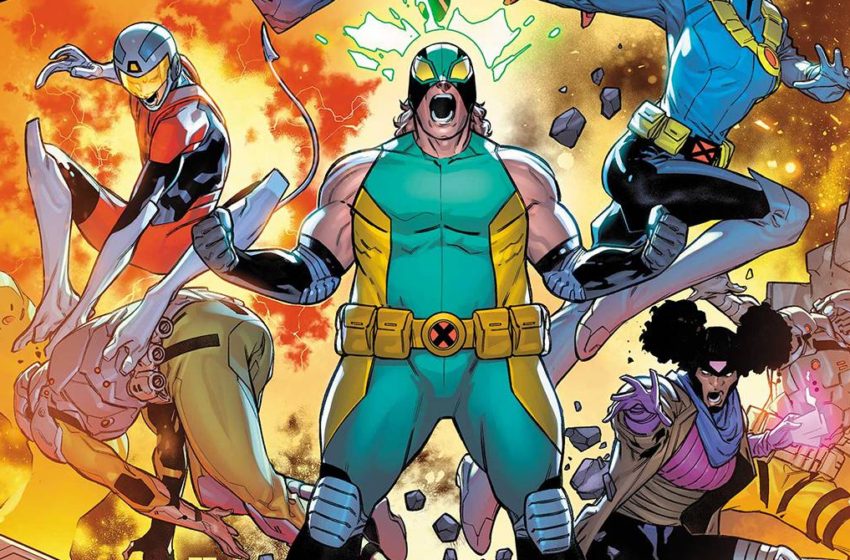Diplomatic tensions between humans and mutants heighten and Cherub gets the spotlight as Children Of The Atom continues! Vita Ayala, Bernard Chang, Marcelo Maiolo, and Travis Lanham take us deeper into the lives of these Maybe Not Mutants in Children of the Atom #2.
Kenneth Laster: Here we are once again! Another issue and another POV. I can’t say I was expecting a different narrator in each issue of the book but with characters so fully formed, I am not mad at it whatsoever! How did Children of the Atom #2 find you Cassie?
Cassie Tongue: As second issues go, this is really smart stuff: we’ve expanded our perspective to include a new narrator (a surprise to me too, but a pleasant one; it immediately applies a ‘team book’ lens to the series); we’ve built on the character work in issue one; we’re even really going to that Dazzler concert! This is an issue that reveals Ayala’s story- and world-building skills. They know where this is going. It’s like we can all take a deep breath, settle in and relax. We’re in good hands.
Avengers vs. X-Men (But not really)

KL: SEO grabbing subheading aside, a handful of Avengers continue the thread of Krakoan jurisdiction over mutant heroes operating in the human world. While this plotline is fascinating on it’s own, the real star here is Vita Ayala’s Storm which I may dare say is perfect. What say you Cassie?
CT: The entire scene — in which Captains America and Marvel, plus Iron Man, arrive at the Krakoan Embassy in New York to demand these children of the atom be kept in line in accordance with Kamala’s Law — has an energy I can only define as ‘Rest in PIECES, Mr. Darcy’.
Storm, at her best, makes concepts like ‘composure’ and ‘methodical verbal destruction of her narrow-minded opposition’ into something resplendent, and Ayala understands this and delivers.
Perhaps one of the best things about this new era of mutants is that now when the Avengers try to apply their understanding of the world as a guideline for mutant behaviour, there are entire structures and systems in this place to refute and circumvent this moralising. Kamala’s Law is a human one (a law denounced by the Avengers when it came for the Champions, Storm points out); mutants have their own governing laws now. These kids want to do good work in the world at great risk to themselves and their safety, and that’s something to respect, not seek to diminish. What was the moment that sold this exchange for you?
KL: It’s hard to pin down a specific moment in the exchange, rather than Ayala just nailing Storm’s cadence. It’s hard for so many writers to get her voice down in such a way but they manage to pin it down. I just love how Storm doesn’t mince words or pull punches but there’s still that composure like you said.
On a separate note I feel like I am in the minority of absolutely loving the Avengers as a constant foil for Mutants. It’s a real aspect of the mutant metaphor that I don’t think gets explored a ton, where the Avengers really are the well intentioned group that would probably call themselves allies, hold Diversity and inclusion training, and consistently overstep into things that aren’t their business. Is it weird that they are the “flagship” group of the Marvel Universe? No, because I’m sure you can name no less massively popular celebrities with consistent and notable blunders when it came to interacting with minority groups. You could only read Avengers titles and think they are great and get confused when mutants have beef much in the same way you can support a popular artist and then get confused by people popping up calling out anti-blackness or transphobia. Are readers listening to mutant voices in a story sense in the same way they listen to marginalized voices in a real world sense. I could rant on and on about how fascinatingly messy and genius that ever present story wrinkle is but the Avengers truly are only on two and a half pages of this comic. Should we move on?
An Angel Named Gabriel

CT: This issue is narrated by Gabriel, AKA the charmingly-dubbed ‘Cherub’. Letting characters share the narration duties means we get to meet them more intimately from the jump, and it’s a smart move – we’ve met Gabriel for all of five minutes, and already we know a lot about what makes him tick. What do you think, Kenneth?
KL: I once again loved Ayala’s narration for Gabriel and I once again have to praise their thoughtfulness with their character work and how it ties into the premise of this book. Gabriel’s narration starts off with him talking about the perception of him as a Black man and how he subverts those expectations. This alone was a well done opening, if not close to narratives I’ve seen before, but what Ayala did that made me really excited was tying this experience as a Black man with the mutant metaphor both within the text and on a metatextual level. Mutant or no Gabriel sees himself in the X-Men, their heroism in the face of being labeled “troubled” and that’s exactly what they are there for! This narration really cements why outrage over this book exploring cultural appropriation for mutants doesn’t sit right. One thing that feels like needs restating is that despite the power of the metaphor, mutants are fictional. They are an allegory that a lot of people find power in, which is what is happening directly on the page here with Gabriel, and exactly what Ayala is exploring with this premise. I don’t know how clean it will be going forward, I think this monologue sold me on this book on a certain level that didn’t necessarily hit for me. What did you think of Cherub’s POV in this?
CT: Cherub seems to – in a natural and character-driven way – set the tone for the bigger conversations that Children of the Atom is interested in having. It could never have worked as a first issue, but it’s so closely linked to it that it feels like this is exactly the deeper, more considered insights that many people were expecting to land right away. We should have known to trust Ayala and trust the process; this POV demonstrates that the book is tightly planned and movingly constructed in its consideration of metaphor and Mutant Metaphor alike.
KL: Exactly! And another really fascinating element in Gabriel’s POV is his shared relationship to Dazzler with his friend Cole. Ayala really doubles down on the Dazzler single ft. Lizzo throwaway by making her such an important and meaningful figure between these characters. I genuinely did not see that coming but I absolutely loved it. I want to go to a Dazzler concert and cry! Did that moment with Cole or just the Dazzler return do anything for you?
CT: It did everything for me. I can’t overstate the times I’ve found solace in music – especially Dazzler-esque pop (ask me about the time I cried at a Kyllie Minogue concert!) – and how it has brought me closer to my friends and closer to both my queerness and my inner strength. Dancefloor-as-church is real, and to give Dazzler, who is so often positioned as a bit of a pop culture joke, a rightful reading as an icon for the misfits? It’s something I needed. Love that Gabe’s mom is an old-school Lila Cheney fan, too.
Hells Belles and All’s Swell

KL: Also returning to the book are the group of villains our Atom Babies fought in #1. I wasn’t expecting this group to become such a foil. Would be interesting if their status as depowered mutants going up against wannabe mutants is going to be dug into a bit more (I’m assuming it will). Thoughts on these friends showing back up or the ongoing plot of this book?
CT: I wasn’t expecting the return of the Hell’s Belles either! What I appreciate is yet another fresh perspective on the Krakoan era for all kinds of mutants – not just our beloved and established heroes. Most of the Hell’s Belles were depowered on M-Day, and without being on Krakoa, do they even know about the Crucible — that they could feasibly regain their powers? The text suggests that they don’t, but even if they had heard rumours, would they even believe them when the message and the promise is coming from the people they fought against for years? I like that Children of the Atom has a foot in the ‘real world’ of New York – it means it can showcase and examine some ‘loose ends’ left over from establishing the new nation-state, complicating its mythology with, well, complications. Anything else stick out to you?
KL: That’s such a good way of putting it! This really is one of the only books that we have set in the Marvel Universe New York to get that specific reaction to Krakoa. The knowledge of the Crucible, and resurrection of mutants in general for non-Krakoan mutants is a super interesting subject. Would that be a state secret? I can’t remember if the resurrection protocols are known to non-mutants in the MU. [Ed. note: Yes, it is a secret.] I also have to point out the action in these scenes was much more legible than the previous, with a lack of double page layouts. The pages were still displayed in that angular way to express the action, but I think the book benefited by having them towards the back end.
Ultimately, having the Hell’s Belles go through to Krakoa is definitely an interesting end for their story in this issue and definitely leaves me wondering what the next threat these kids are going to face.
X-Traneous Thoughts

- Krakoan Reads: Unusual dinner guests
- Madrox is just about everywhere in the Krakoan era, and I hope someone is cataloguing every single appearance of Jamie and his dupes. In this issue, he’s working the desk at the Krakoan Embassy. I hope that dupe is super into diplomacy or at least administration.
- Gabe’s workout is called “You Must be a Mutant to Have Abs Like That” and I for one expect that line to pop-up in a second-rate but eminently lovable pop song any minute now.
- In true homage to her namesake, at one point Cyclops-Lass is told to “chill out”. It’s a fair call.
- Gabe’s friend Cole attributes his “uncanny” injury recovery, as mentioned in issue #1, being due to an, “uh, experimental treatment program”…
- Sorry Jay Jay but “Daycrawler” is bounds better than “Nighty Nightcrawler”







